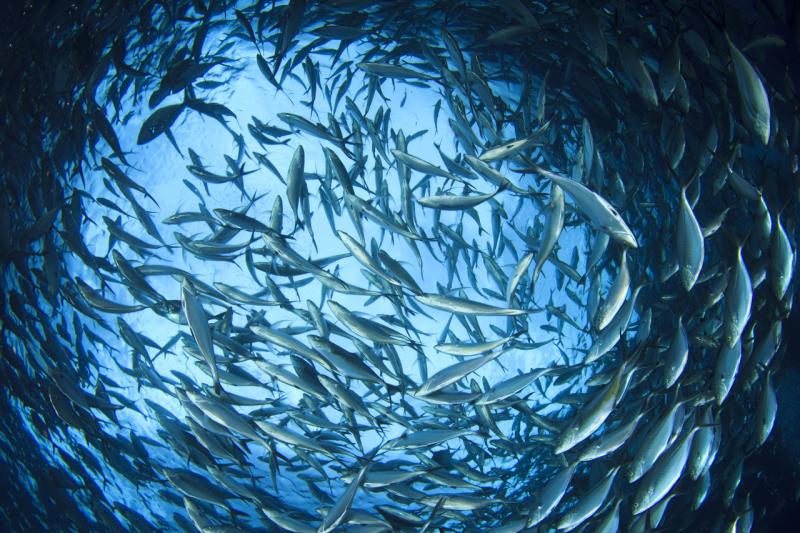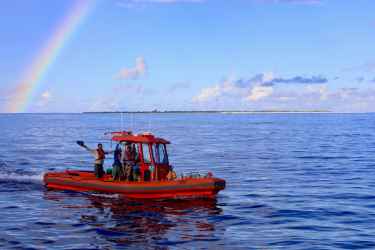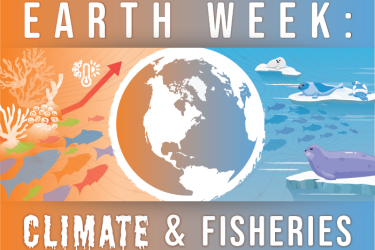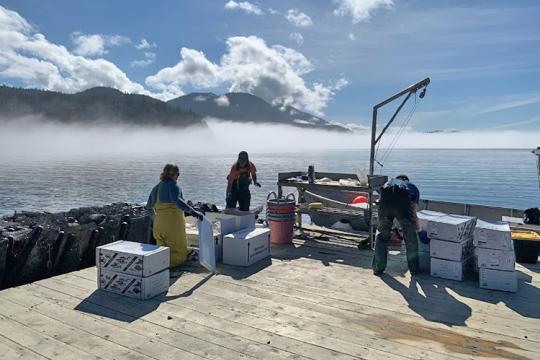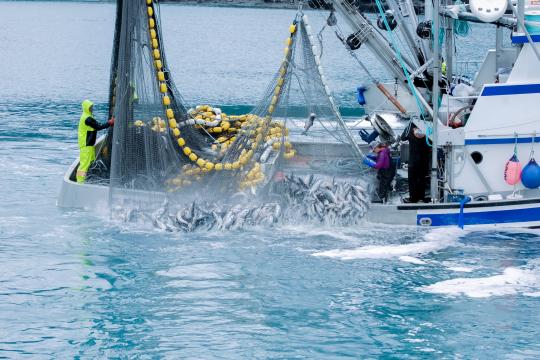On September 16, the Seafood Nutrition Partnership will recognize NOAA Fisheries Chief of External Affairs Laurel Bryant for her contributions to the national seafood sustainability movement. Throughout her 25-year career at NOAA, she has championed the benefits of healthy seafood and supported strong partnerships across the seafood industry. See what she has to say about the roles seafood plays in supporting public health and a growing blue economy.
Seafood and Human Health

What is the Seafood Nutrition Partnership?
The Seafood Nutrition Partnership is the leading non-profit organization in the United States dedicated to building awareness of the health and nutritional importance of seafood. The Partnership is helping address the country’s public health crisis through education programs that inspire Americans to incorporate more seafood into their diets.
What are the health benefits of eating seafood? How does NOAA work with partners to encourage consumption of healthy seafood choices?
You can learn more about the health benefits of seafood at NOAA FishWatch—our national database for sustainable seafood. Working with partners such as Seafood Nutrition Partnership and chefs allows NOAA Fisheries to enter the discussion around the importance of sustainable seafood, advancing both human health and the agency’s stewardship mission.
Sustainable Seafood
Why does NOAA Fisheries care about sustainable seafood?
Sustainable seafood is in complete alignment with the agency’s stewardship mission. In addition to being good for your health, seafood is good for the planet. Responsibly harvested and farmed seafood can help address a myriad of sustainability and stewardship issues.
What does sustainable seafood mean to you and why are you so passionate about sustainable seafood?
Sustainable seafood has a full sense of community for me. From the ocean to the table, sustainable practices include taking into account the environment and the people as well as the seafood itself. That’s why I always look to purchase U.S.-produced seafood wherever possible. I know it takes into account the whole community involved with bringing me a healthy meal.
You often discuss the "seafood table" and the many players, such as fishermen, fish farmers, consumers, and environmental organizations, who are critical in promoting sustainable options. Who is currently missing or unrepresented at the table?
I feel privileged to have access to a variety of fresh seafood choices every week, but that’s not available or affordable for everyone. People at all income levels need to have access to healthy, omega-3 rich seafood at a price they can afford. By working together with groups such as the Seafood Nutrition Partnership we can expand that table to include everyone.
For those of us who are seafood lovers, but not necessarily fishermen or part of the industry, what can we do to promote sustainable options in the United States?
Eat a variety of U.S.-produced seafood at least two to three times a week. Engage with the folks at your grocery stores and restaurants about where they are sourcing their seafood.
Aquaculture as a Supplement

Why is aquaculture necessary to support/supplement sustainable seafood in the United States?
Without aquaculture we will not have sustainable supplies of seafood available for everyone. In fact, up to 90 percent of the seafood Americans consume today is imported. At least half of those imports come from foreign farms where we have no control over environmental and labor standards. We know that Americans need to dramatically increase their consumption of seafood for the amazing health benefits.
Consumption of seafood in America continues to average only 14 pounds per person per year—compared with 110 pounds of red meat, 130 pounds of sugar, and a whopping 600 pounds of dairy. Dramatically increasing consumption of seafood is a key step toward tackling the public health crisis of obesity in America and the preventable diseases that come with it. But to do so sustainably, we must supplement our wild-capture fisheries with farm-raised species.
Looking Back on Your Career
You joined NOAA Fisheries in 1994. Can you describe the landscape at the time? What was the biggest fishery issue that year?
As I remember it, the cod stock in New England was in deep trouble and up farther north in Newfoundland the stock had commercially collapsed. Fisheries around the country were in decline. Industry was increasingly recognizing that we needed to get out of the boom-bust cycles and the race-to-fish management models of old and play the long game of managing harvests at sustainable levels. Today, the U.S. fisheries management model has become an international gold standard and is one of our most important fishery exports.
How have you seen public opinion of seafood change during your time at Fisheries?
When I first began at NOAA Fisheries, the issue of sustainable seafood wasn’t on the public’s mind. That changed in the mid- to late-1990s when conservation groups began to turn from the issues of clean water, clean air, and wetlands, and open their eyes to the issues of ocean stewardship. Their engagement in the process helped move our science-based process toward the accountable management system we benefit from today. Now we need to improve public awareness of the success of our fisheries management. We need to more actively reward our fishermen in the marketplace by consuming the healthy, nutritious, and sustainable seafood they bring to the table.
What are some of your favorite memories or top highlights from your career at NOAA Fisheries? What are you most proud of?
How far do you think we’ve come in accomplishing seafood sustainability? What are some of the biggest challenges and opportunities facing sustainable seafood?
Sustainable seafood is increasingly being understood as an “ambassador issue” that, when the management practices are implemented and enforced, can address many environmental and socio-economic issues. Using the emerging technologies that provide transparency and accountability throughout the supply chain can have direct impacts on the stewardship of our global ocean fisheries, fish farms, and the labor force we depend on for bringing them to our dinner tables. The big challenge in the United States is being able to grow our own seafood to supplement wild-caught fish and reduce our reliance imports and their heavy carbon footprint.
What is your personal vision for the future of sustainable seafood?
That seafood becomes the key protein of our blue economy—requiring clean oceans and accountable stewardship around the world.
Anything else that you want the public to know about NOAA Fisheries’ work?
A lot of people don’t fully appreciate where we are today because they don’t know where we’ve been or seen how far we’ve come in addressing human impacts on the sustainability of our environment and ocean resources. NOAA Fisheries is a small, science-based agency with a dedicated workforce passionate about the agency’s mission of service and stewardship. Through the public’s investment in our science and the public-private partnership of the U.S. fisheries management process, the United States has become the recognized leader in marine stewardship and sustainable use of fishery resources. We need to continue that leadership into the world of aquaculture and raise the bar just as we are doing in wild-capture fisheries.
